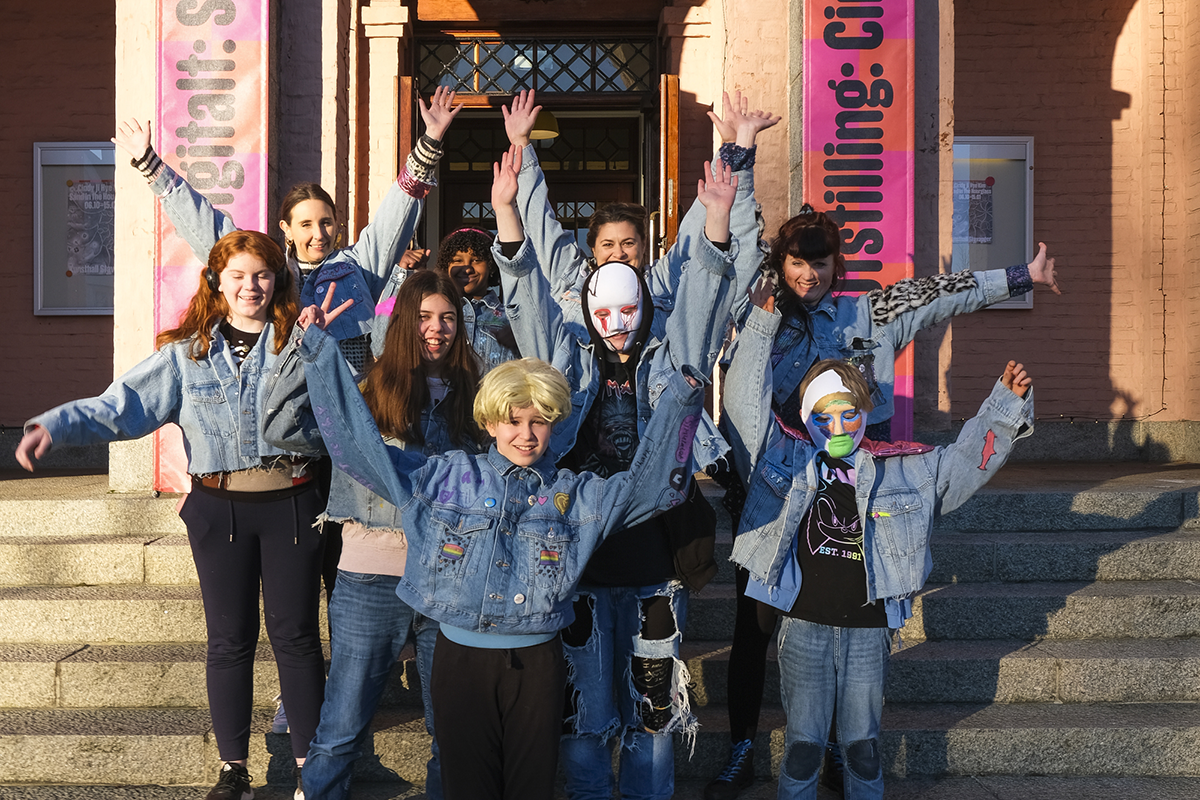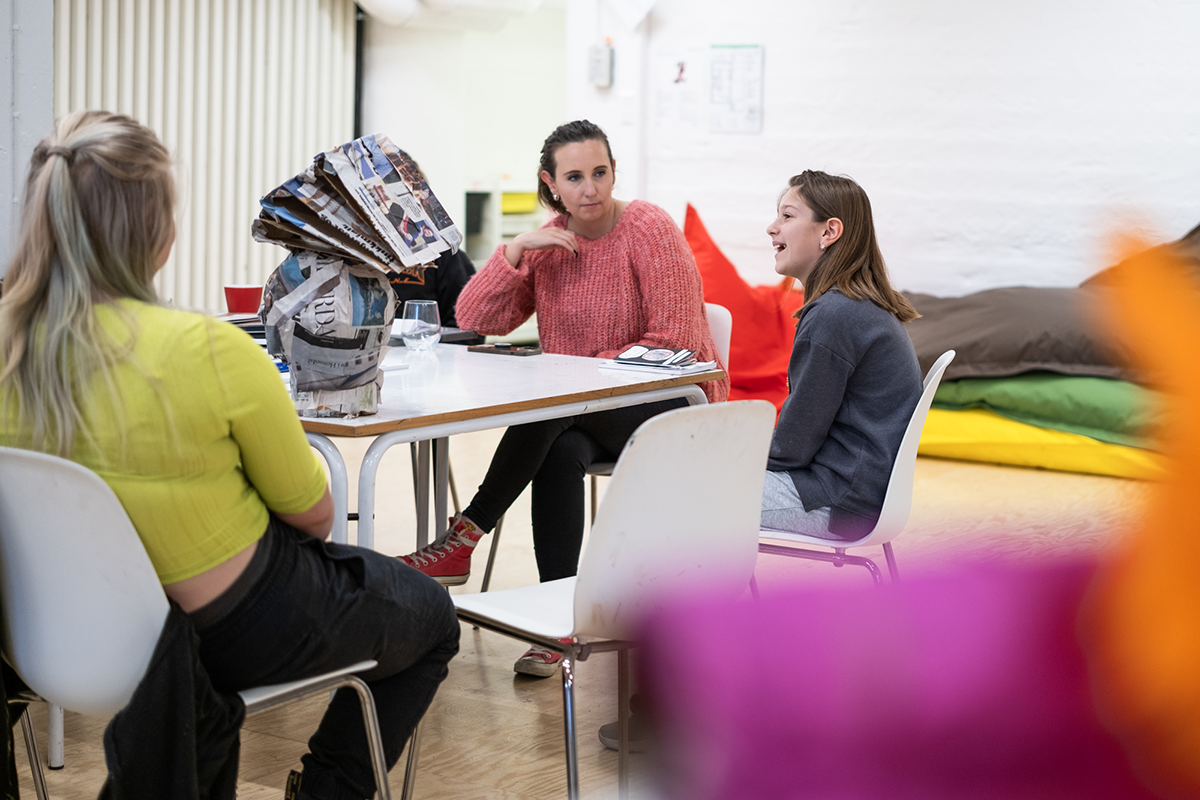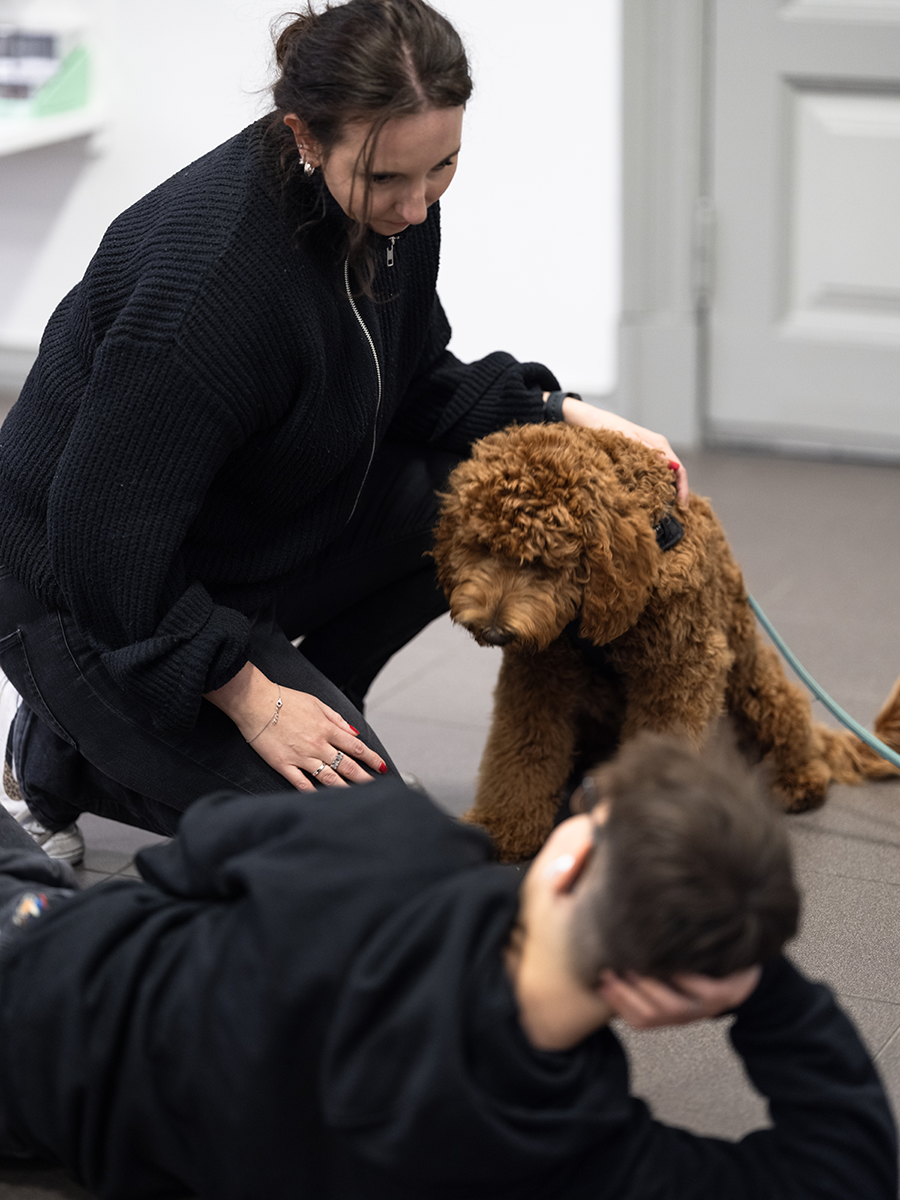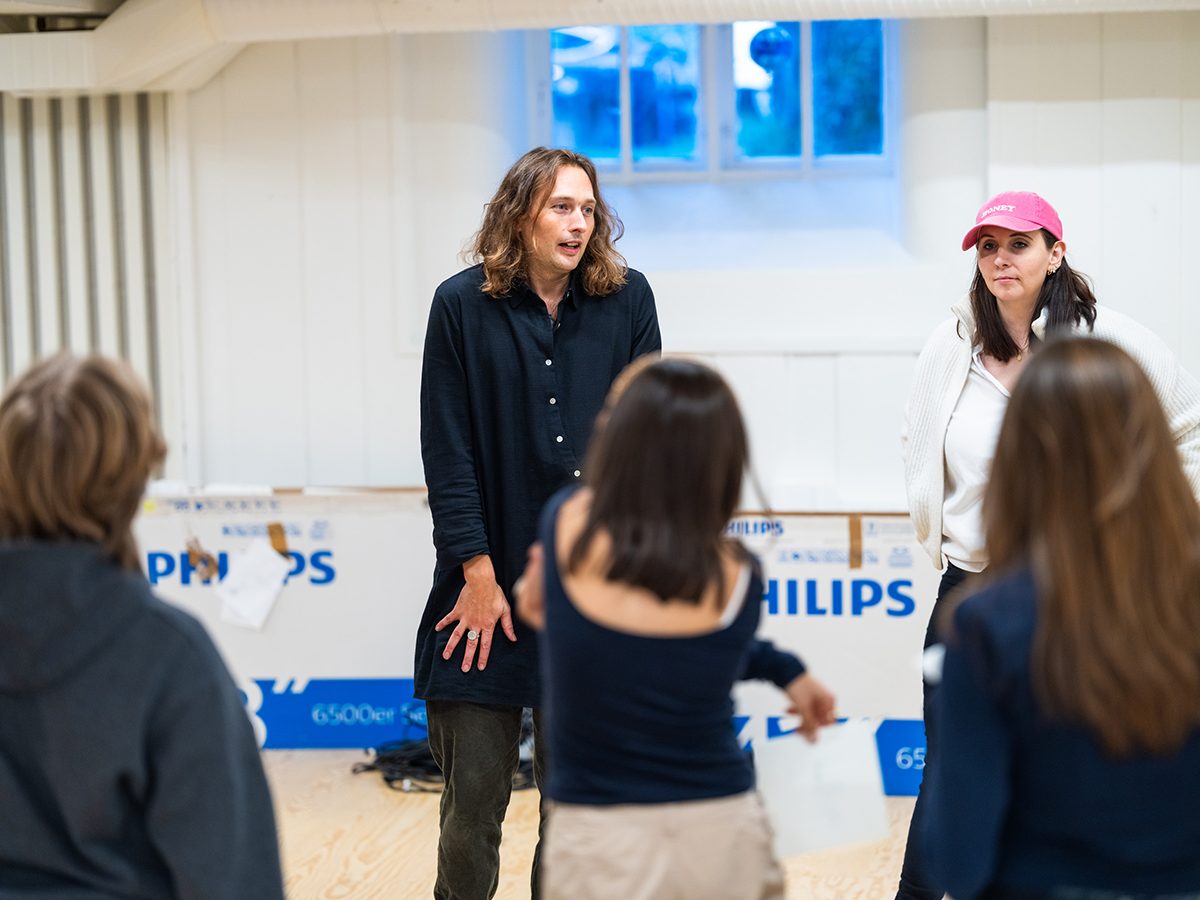Since 2019, Trine Ottosen has served as the dedicated youth worker for Mobilizing Citizenship, guiding young voices through creative and civic exploration. In a conversation with curator Kristina Ketola Bore, Ottosen delves into the vital role of youth work in shaping inclusive, responsive educational spaces within art institutions. Together, they unpack why the presence of youth workers is not just beneficial but urgent, when cultivating transformative experiences for the next generation.

Kristina Hi, Trine. You have been our youth worker for Mobilizing Citizenship (MC) since 2019. I thought I would start by letting you introduce yourself and your background.
Trine I’m a teacher. I have a Norwegian and history degree with political science, but I have worked as a youth worker since 2012 in Sola municipality. I have also been on the National Board of Youth Work Norway, which is the national youth worker organisation in Norway, since 2011, and I have been president of the organisation since 2019. Now I combine that in my volunteer spare time, and my professional work is to manage the youth clubs in Sola.
K You weren’t originally part of MC. Our first semester was in 2018, and we ran it for a year. When the second year started, it was obvious to me that we needed someone who had youth work experience to come in and work with us, because we saw that there were situations arising that we weren’t equipped to handle. That’s when I called you. Since autumn 2019 you’ve been following the project with us and have been our youth club person, and that’s been super valuable. I don’t think we could have done this project successfully if it weren’t for you.
T Thank you.
K It’s true. I think that anyone working with young people needs to have someone who has that experience because it isn’t something you can just throw together and expect to go well. Young people are in a very formative part of their lives, and they’re quite vulnerable.
T Yes, and I also think that it’s easier for me, since I’m working as a youth worker, to use the youth language in the recruitment process, than it is for curators or artists coming from contemporary art. I think that also affected who attended the projects.
K Recruitment in general is an important part of Mobilizing Citizenship. We talked a lot about who we wanted to include in the project and why. One of the goals was to try and target young people who might not come to the Kunsthall of their own accord, or might not go to other art or cultural institutions, but also who might be falling outside of the larger social groupings in school. How did you go about finding participants?
T Throughout the project we have done some adjustments every year, but the model has been that the artists, project manager, and the curator explain to me what the week or semester is going to be like. I try to break it down into youth-friendly language. And sometimes we have used graphic posters and pictures to make the recruitment process pop. And then I contact youth clubs in the municipalities around Stavanger—there are a lot of smaller municipalities around here, and many youth clubs. The first years I was travelling around to some youth clubs to explain the project. I also work in a youth club of my own in Sola, and of course I have done more recruitment from that youth club because it has been a natural topic with the young people there. I have to explain what the project is about. It’s not a school project but is a leisure-time project over the weekends or during vacation.
K We purposefully didn’t recruit through schools. The way that I initially thought about that was that in a school, or in a class, people have designated roles that have been established, which is often limiting for young people.
We purposefully didn’t recruit through schools. The way that I initially thought about that was that in a school, or in a class, people have designated roles that have been established, which is often limiting for young people.
T When I talked with schools, because it happens sometimes, I was very specific that I didn’t want them to have a talk in the classroom about this. I wanted the teacher to send it out to the parents and the pupils as an information package. A lot of the schools now have information screens, so I asked them to put up a poster in their info screens. That’s the same way the youth clubs do it when they are recruiting people for their workshops.
K You’ve mentioned how young people are critical of what they attend—that they’re precious about their time. What does it take for a young person to commit to a project?
T I think that’s very individual. They need to understand what they will be doing to be able to spend their time on it, but it needs to be flexible enough and not take up too much time. The five-hour workshop we did, with a big lunch break in the middle, was nice. It’s smart that we changed from having weekend workshops throughout the whole semester to having a week during the fall or winter break. Because it’s easier for young people to say ‘I want to do this for one week’ than for one semester.

K So why do you think youth clubs are good places to recruit from?
T Research done here in Norway, at OsloMet, shows that young people who are attending youth clubs have weaker relationships to guardians and school, but they have stronger relationships to friends and their social society than the young people who do not attend youth clubs. Researchers think the method that the youth workers are using in their relational work with young people is the reason young people get better in building social relationships. The youth worker has a different perspective from other grown-ups when they meet the young people. They always ask, ‘Who are you and what do you want to do here?’ Instead of, ‘Hello, this is our youth club. You can do this and this…’ It’s a different perspective that comes back to youth participation. As youth workers, we are working to find out: ‘What is the young person’s interest and resources?’
Researchers think the method that the youth workers are using in their relational work with young people is the reason young people get better in building social relationships. The youth worker has a different perspective from other grown-ups when they meet the young people.
K Interesting. How do you think MC has complemented what the youth clubs around here are offering? You obviously do work with art, and the youth do have access to certain types of artistic expressions.
T Youth clubs work with social relations, youth participation, but also youth culture and cultural expressions (they are doing art workshops and music and gaming and photos and food, and many different things). But what’s different in the MC workshops is that we put the art expression into a societal context—MC will explore a problem or issue in society, and then use art to explain it or reflect around it.
K How do you think the participants saw the Kunsthall? Do you think they understood what we did—that we were showing contemporary art there?
T I don’t know, actually. I think it’s different for the different participants. For some, definitely, it was just a place where they came and did something, and they had fun and learned something. But for other young people—maybe those who have a genuine interest in art from before, or got it during the project—for them, they were probably more aware that this was a place for art.
K We did have participants who came in with interest in art already, but it was never a goal for us to use this as a way to grow an audience or create new artists. How do you think it was for young people in the project to work with international artists?
T When I was coming into MC, I thought it would be a selling point for young people—that we had international artists. It wasn’t, at all.
When I was coming into MC, I thought it would be a selling point for young people—that we had international artists. It wasn’t, at all.
K Absolutely. Some of the artists that they got to work with are people who are quite established on the international art scene, and I sort of love that the youth didn’t care!
T No, they did not care about where the artists came from, which is also a nice thing. It was more like: What do they do, who are they, what can I learn?
K In MC, we focused on young people between 12 and 16, which is the age that you are usually in ungdomsskolen, as it’s called in Norwegian, or middle school in English. It’s a very formative time where your identity becomes clearer, where you’re exploring a bit more. You’re also at the cusp of becoming an adult. We thought that was an interesting time to work with people. For us as an institution it is important to make room for young people’s voices, and to say that we are actually interested in what you have to say. And to communicate to young people that they do have an important place in society and what they think is important. MC first started around the time when Greta Thunberg was entering public discourse as a role model for young people and the importance of expressing yourself. I don’t know how influenced I was, directly or indirectly, by that, but I can’t completely overlook it. For us as an institution and for the artists we’ve brought in, it has been eye-opening to see how far ahead so many of the participants have been in their exploration of their own voices. They hold beliefs about how to navigate the world. LGBTQIA rights and issues around social justice are important to them. Their opinions and beliefs have not been immature in any way, but really well informed.
Trine, what do you believe is specific about the Norwegian condition for young people today? A lot of the artists that visited us came from the US or the UK where there is no welfare state, there is more poverty, which we also have in Norway but not to the extent that you would see, for example, in the US. However, young people are still struggling with other things here—it’s not a carefree existence.
T When we are talking about it from a Norwegian context it’s important to be aware that there are very big differences inside Norway as well. For example, more rural areas have other challenges than our region. Our region is often talked about as a ‘rich’ region, and the youth clubs are definitely affected by that. We have a lot of resources. We have many grown-ups working in the youth clubs, but in rural areas there could be only one youth worker. That affects the youth club and the young people. The big topic for young people now is mental health. This is affected by many things. I think they feel it’s a changing and unsafe world after Covid. The environmental issue is one topic connected to that, and the war in Ukraine is affecting young people. The war in Palestine has definitely affected many young people. Not to mention Trump being elected president again.
The big topic for young people now is mental health. This is affected by many things. I think they feel it’s a changing and unsafe world after Covid.
K It is interesting, going back to Covid, which happened as we were running this project. Because of Covid, we had to pause the project. After Covid, it became harder to recruit young people for MC. For the last semester in the autumn of 2024, we didn’t fill up the group until a couple of days before. Is this something you’re seeing in general?
T Yeah, definitely. I don’t think it’s because young people are not interested. It’s because they are critical about how to use their time. They are not really planning ahead in the same way as before Covid, nor do their parents. We also see the same thing in youth clubs. We have had gaming parties for many years, and there has always been a waiting list. We have 50 spots where youth can come and play computer games for 24 hours, but now it’s only around 20 people attending. Maybe there is something positive about it in that young people prefer being at home—that the home has become more of a safe place for them. That also has its benefits, I believe.

K Going back to contemporary art as a meeting place for young people, why could it be a good entry point for young people, to meet contemporary art, or to come into a contemporary art institution?
T This is not my expertise, but at Kunsthall Stavanger as an institution, and with MC, it has been kept quite open and flexible for young people to come in and be themselves and to find themselves and to discuss topics they’re interested in, but related to art and to use art as a way to express their feelings, needs, and opinions.
K I quite purposefully invited artists whose work I saw as political, and, specifically, I invited a lot of artists who work with queerness, and the reasoning behind that was how flexibility is part of a queer perspective—this idea that you’re not bound to something forever and that you can move between gender identifiers and present yourself in different ways. I thought that would be quite interesting for young people who are trying to navigate and find their place in the world, and to also say to them, ‘Today you feel like this person. If you feel like you want to express yourself in a different way tomorrow, you’re free to do so.’
T I agree with that. But also, I feel that with the young people of this generation, there are a lot of places where they have the opportunity to be themselves. With MC it was about who are the grown-ups who are facilitating, and how do they express themselves, and what do they express? Do they express tolerance and flexibility and openness, or do they express that they are scared?
K Yes, it’s not only about what you say, it’s about how you act. In the quite early days of MC, we had some artists come in, and in conversation one of the participants talked about being bullied. This has been a recurring theme throughout the project, I would say. Both of the artists who were hosting this workshop said, ‘Oh, I was also bullied when I was your age.’ It was like something in the room shifted. They saw that these adults who were seemingly cool had been through something similar that they were going through, and it was not something that defined them today.
They saw that these adults who were seemingly cool had been through something similar that they were going through, and it was not something that defined them today.
T Those talks were very important for the project, but also, that’s why it’s important to have a youth worker there.
K The further we got into this project, the more I understood the responsibility in the project. I don’t think it’s something you should take on because you want to…
T …Do something cool for young people.
K Yes, exactly. You need to understand that it’s quite a big responsibility. There were occurrences where it was important that you were there and could help a participant, or a parent, find the right organisation or institution to go to if there was something happening in a person’s life that maybe had not come up in a school situation.
T I feel that’s always the challenge when you’re a youth worker and the young people have your phone number—that you’re not only a youth worker when you’re there. You’re a youth worker 24/7. And then it’s important to have a youth worker who also understands the society around us, who’s not only thinking about ‘what can I do?’ but what can the institutions around us do, and what is actually the parents’ work themselves, and to be able to take that phone call to the parents.

K Do you think there was something special about the MC structure when it comes to youth work?
T It has been very important for MC to have a team that works together. We had a project manager who was facilitating everything, so the curator didn’t have to do those tasks. As a youth worker, my role has become very defined over the years. My work was recruitment and being there for young people, and having contact with parents. And the artists came with the content for the workshop. Everyone’s an expert in something, and they understood their role. We got a good dynamic between the young people, the artists, and me and the project manager. We worked well together.
K If other cultural institutions are trying to reach young people, what do you think is important to keep in mind?
T When you are making projects or trying to reach out to different target groups, before you start doing that, ask why. Why is this a goal for us, and what do we want to achieve?
K If I’m going to try and answer that question—what do we want to achieve?—for MC, we wanted to give room for young people, we wanted them to feel we were interested in their voice and to also help them gain access to tools that could make them feel like they had a way to speak up. Do you think that’s something we achieved?
T Yeah, definitely. All of the young people who were in MC came out stronger in a way, and more secure in their own voice, and maybe they didn’t care so much about what other people thought. That’s a good achievement.
All of the young people who were in MC came out stronger in a way, and more secure in their own voice, and maybe they didn’t care so much about what other people thought. That’s a good achievement.